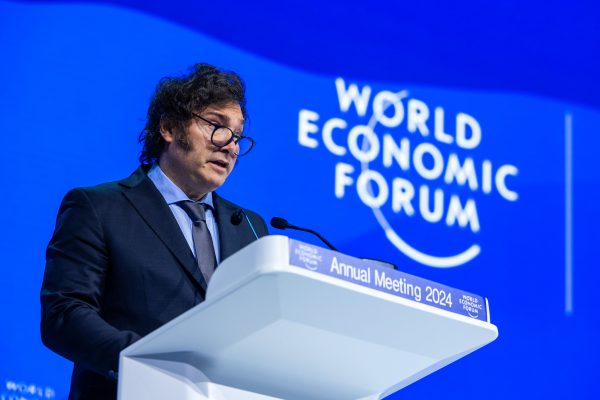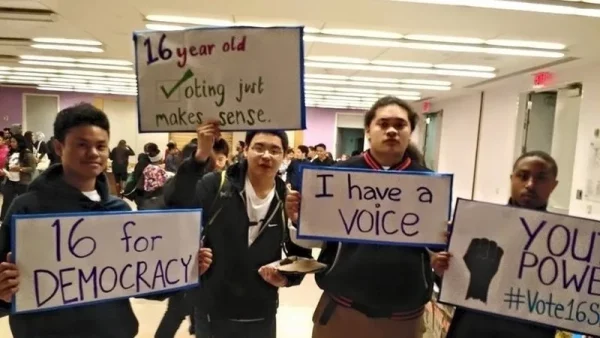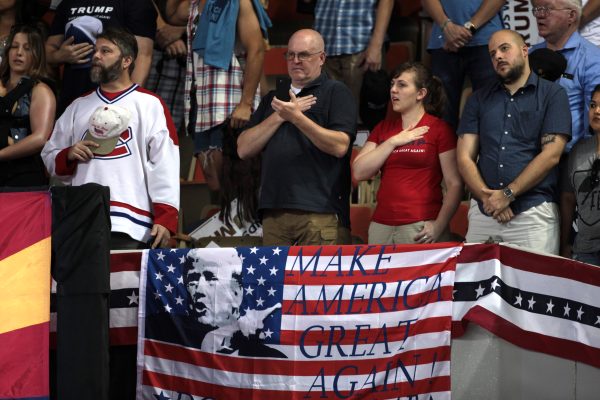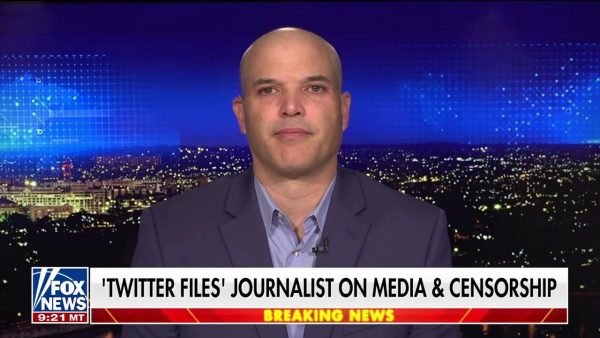Javier Milei’s Freak Show Act Is a Taste of Things to Come
Argentina’s far-right president Javier Milei was enthusiastically received at the World Economic Forum in Davos. The warm welcome extended to Milei is a sign of where free-market radicalism is headed amid the deepening crisis of neoliberalism.
February 5, 2024
Source: Jacobin

Imabge credit: World Economic Forum/Flickr
Javier Milei’s warm welcome at this year’s World Economic Forum (WEF) in Davos was the latest stage in the seemingly baffling rise of radical right-wing libertarianism to political respectability. The recently elected president of Argentina, who brandished a chain saw during campaign rallies to symbolically cut through regulatory red tape, has become the new hero figure of the libertarian right.
Libertarianism has long been underestimated as a fringe political movement. We should see its bid for the political mainstream in relation to the development of its closest ideological ally, neoliberalism, alongside which it emerged as a right-wing phenomenon in the 1930s. The fact that libertarian leaders are gaining popularity just as the neoliberal era appears to be coming to an end points to a consolidation of market-radical ideologies rather than their dissolution.
Star of the Show
Schmoozing with the economic elite in Davos, Javier Milei used his podium at the WEF to caution his listeners that the “Western world is in danger.” Greeted by WEF founder Klaus Schwab as an “extraordinary person,” the Argentine president launched into a tirade against feminists, climate activists, and much of the academic establishment, whom he described as enemies of freedom and prosperity.
Ignoring attempts that the WEF has made to buy into topics of social responsibility and ecological transformation over recent years, Milei sought to reduce economics to the simple Randian clash between the “makers” and the “takers.” Closing on a nod to all the businessmen in the audience, he concluded: “You are heroes . . . let no one tell you that your ambition is immoral.”
Milei’s speech was quick to generate a buzz in the ultraliberal community around the world, which was unsurprisingly flattered by such compliments. WEF participants lauded him for sounding the alarm bells “just in time.” Elon Musk promoted his speech as a “good explanation” of the economics of prosperity, going on to share memes about Milei’s popularity on Twitter/X. Historian-turned-right-wing-pundit Niall Ferguson praised the talk as “a magnificent defense of individual liberty and the free market economy.”
The sight of Milei’s hard-core market radicalism taking center stage at the most important gathering of neoliberal stakeholders offered a rallying point to those on the Right who feared that economic liberalism had lost its edge when it attempted to greenwash its image by including social and environmental concerns in its call for a new capitalism.
While inclusion in the WEF marks a new high point in its fortunes, Milei’s brand of radical right-wing libertarianism had already seen a creeping resurgence over the last decade or so. The works of Ayn Rand, the ur-popularizer of American libertarianism and “Goddess of the Market,” experienced a notable revival following praise from Donald Trump and an array of Silicon Valley entrepreneurs.
Meanwhile, a concerted effort by libertarian activists and investors has brought the idea of autonomous “seasteading” communities, beyond the reach of any state legislation, closer to realization than ever before. More subtly, the influence of libertarian utopias, such as those imagined by science-fiction author Robert A. Heinlein, have permeated recent revivals of classic hard science fiction on popular streaming platforms.
Libertarianism and Neoliberalism
At the same time that libertarian ideologies began to gain mainstream popularity, commentators on the Left were starting to debate the end of an era dominated by free-market economics. Neoliberalism, libertarianism’s slightly more respectable brother, appeared to have received its death knell in the global reaction to the COVID-19 pandemic, which led to unprecedented forms of government intervention and new state-based approaches to problems of social welfare and environmental crisis.
Others saw the end of neoliberalism augured in the election of Donald Trump and the isolationist, xenophobic, and plainly illiberal policies that his administration embraced. As the 2020s progressed, neoliberalism was considered by many to be a spent force.
It might very well be true that what we are seeing right now marks the end of a moderate, centrist version of “open society” neoliberalism, so appealing for decades even to many on the erstwhile social democratic left. But the rising popularity of more extreme forms of libertarianism around the world should caution us that market radicalism isn’t simply going to disappear. Instead, it is consolidating its ideology and returning to its cultural roots.
Milei’s dramatic warning that Western civilization faces grave peril is no mere rhetorical trope designed to garner more attention in today’s polarized social media landscape. It is deeply embedded in a fatalistic tradition that Milei shares with the earliest neoliberal and libertarian thinkers of the 1930s and ’40s. Friedrich Hayek’s pamphlet The Road to Serfdom (1944), similarly directed against the threat of “collectivism,” opens by speaking of an “unexpected turn” that has led the “course of civilization” to reverse toward “past ages of barbarism.”
The statement of aims drafted at the first meeting of the Mont Pèlerin Society, an international gathering of neoliberal intellectuals, politicians, and business figures, put it in equally blunt terms: “The central values of civilization are in danger.” Economic planning, according to these early neoliberals, would inevitably lead us down the “road to serfdom” and totalitarianism.
While they may have branched out into intellectually distinct movements over time, both neoliberalism and right-wing libertarianism shared a moment of conception and a foundational myth. Born from the intellectually pessimistic climate that characterized the mainstream liberal response to the rise of totalitarian ideologies in the 1930s and ’40s, those favoring a revival of liberalism in bleak times sought to do so by styling themselves as bulwarks against the totalitarian threat.
While European neoliberals like Hayek put a stronger focus on the “collectivist” danger of communism and fascism, American libertarians like H. L. Mencken, Rose Wilder Lane, or Isabel Paterson included staunch opposition to the politics of the New Deal in their assessment of totalitarianism from an early stage. Both sides, however, initially embraced a dramatic fatalism that presented any appeal to collective action as a threat to civilization at large.
Zombie Neoliberalism
The “specter of totalitarianism” invoked by Hayek and many of his fellow travelers became a discursive tool to fend off discussions of inequality and stop any concerns for social justice in their tracks. It was soon used to attack even popular democracy as such. In a series of books, neoliberal historian Jacob L. Talmon sought to deconstruct the legacy of the French revolution, warning that it had resulted in the rise of a dangerous “totalitarian Messianic democracy.”
Talmon’s intervention was part of a larger debate around the historical determinism that was supposedly inherent to emancipatory understandings of democracy, with Hayek and Karl Popper among the leading protagonists. What neoliberals and libertarians embraced instead was the notion of market democracy, pioneered by Austrian economist Ludwig von Mises, in which each purchase or sale in a marketplace should be considered a vote that represents the ideals of democracy far better than a state-centered approach ever could. In this framework, the market, ironically praised as the savior of democratic civilization, was at the same time expected to gradually replace popular democracy.
Only in the 1960s, in reaction to the emancipatory politics of the New Left, would the proponents of moderate neoliberalism and radical libertarianism truly split. Libertarian economist Murray Rothbard dismissed the egalitarian protest of the decades on the basis of a racialized notion of human nature. This would gradually lead him and his followers to the far-right fringes of American politics, forming the basis of today’s alt-right, as historian Quinn Slobodian has recently shown.
A decade later, neoliberals under the supervision of Milton Friedman got the chance to test themselves in active policymaking when they became key economic advisers in the government of Chilean dictator Augusto Pinochet. Conveniently ignoring their creed’s anti-totalitarian past, neoliberalism found its way to the intellectual mainstream — powerfully underlined by the award of Nobel Prizes for economics to Hayek in 1974 and Friedman in 1976 — on the backs of the Chilean people and the long-lasting impact of the economic shock doctrine pursued by the Pinochet regime.
In his idiosyncratic self-stylization, Javier Milei has paid tribute to both of these concurrent ideologies. One of his five beloved English Mastiffs is called “Murray,” another “Milton.” His revival of the specter of totalitarianism on the platform of the WEF in Davos may be a sign that the schism between more moderate neoliberals and radical libertarians is healing.
While the ostensible antistatism of this current of thought conceals the myriad ways in which neoliberal policymakers actually sought to use the state instead of abolishing it, it also drives home the point that market radicals have no qualms about doing away with democracy for good.
They might come for it under the pretense of defending “Western civilization,” embracing authoritarian leaders like Milei, Donald Trump, or Jair Bolsonaro along the way.
It is unlikely that in the face of a new crisis of liberalism, they are simply going to abandon the neoliberal legacy and let it die. Instead, the next wave of “zombie neoliberalism” is about to break. Brace for impact.











